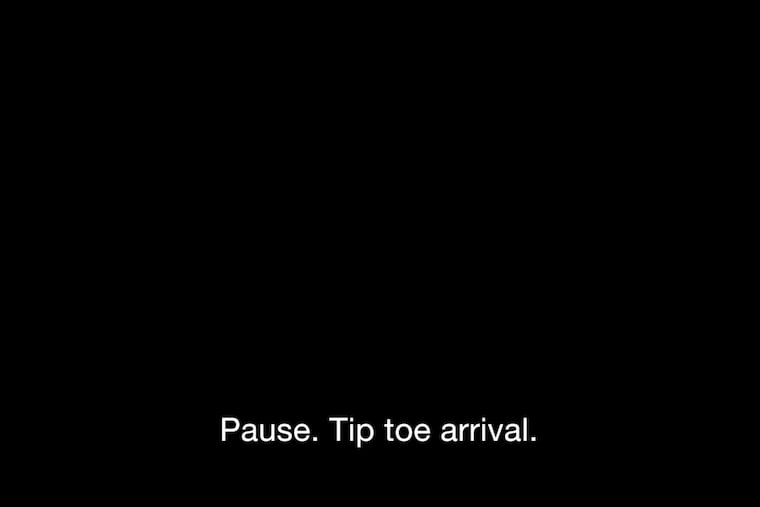A dance with no dancer: Carolyn Lazard reimagines an art form
Artist Carolyn Lazard's show at ICA runs through July 9

How do you experience dance? Many people see it — onstage or on TikTok — watching a dancer leap, turn, shake, shimmy, stomp, twist, fall, and rise. But if you hear a dance or read a description of it, can you view the artwork anew?
Carolyn Lazard’s exhibit, Long Take at the Institute of Contemporary Art, examines this translation. Visitors will sit to watch Lazard’s 19-minute-long Leans, Reverses video presented in three different ways on three separate monitors. Each monitor shows a black screen with white subtitles describing the audio. One plays Lazard’s voice as they read a dance score they wrote. Another plays the sound from multiple microphones worn by dancer Jerron Herman as he performed the movement Lazard directed. The other monitor plays the voice of poet Joselia Rebekah Hughes as she reads a description of Herman’s movement that she and Lazard wrote after watching the dance. You don’t see the dancer; you feel his presence.
“What you hear is what you read, and what you read is what you hear,” said Lazard, who grew up in the Philadelphia area and now lives betweenPhiladelphia and New York. Long Take is their first solo exhibit in their hometown. Lazard, Herman, and Hughes are Black disabled artists who created the multisensory installation that interrogates the accessibility of visual art. Lazard points out that our overreliance on sight is rooted in European culture and colonialism that dismisses touch, hearing, and other sensory learning methods.
“This is a text- and sound-based way of experiencing a dance performance, vs. how we normally experience dance. We think of dance as a primarily visual medium, where we sit and we watch it with our eyes. And this work is ... trying to suggest that there might be alternative ways of experiencing dance that are more about it as [an] ... embodied experience,” said Lazard. They were inspired by Kayla Hamilton’s Nearly Sighted, which asked viewers to wear an eye patch to see a dance work, echoing how Hamilton, who is blind in one eye, experiences it.
The exhibit builds on the legacy of dance films — from Merce Cunningham, Nam June Paik, and others — created in the 1960s and ‘70s for television, which expanded access to dance for audiences who couldn’t see it in, say, an opera house. Long Take offers a similar approach. “We often think of accessibility as a set of strict protocols to be followed and adhered to, but when we need access, or when we facilitate access for others, you start to see that access can produce new aesthetic forms,” said Lazard. “Or you could say, it can arrive in a whole variety of flavors. It can be institutional, it can be intimate, it can be ad hoc.”
Reading the description of Lazard’s work won’t satisfy curiosity, though. Long Take must be experienced in person. Our take? Go “see” it.
“Long Take” runs March 10 to July 9 at the Institute of Contemporary Art, 118 S. 36th St., Phila., 215-898-7108 or icaphila.org